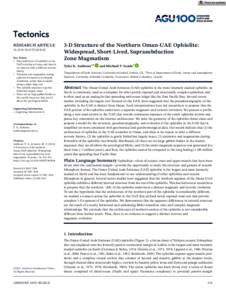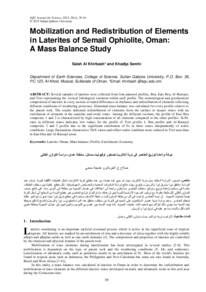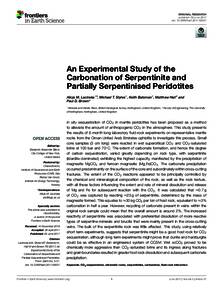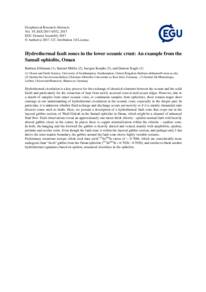وثيقة
3-D structure of the northern Oman-UAE ophiolite : widespread, short-lived, suprasubduction zone magmatism.
المعرف
DOI: 10.1029/2018TC005038
المصدر
Tectonics. v. 38, 1, p. 233-252
المساهمون
Searle, Michael P., مؤلف
الدولة
United Kingdom.
الناشر
Blackwell Publishing Ltd.
ميلادي
2019-01-01
اللغة
الأنجليزية
الملخص الإنجليزي
The Oman-United Arab Emirates (UAE) ophiolite is the most intensely studied ophiolite on Earth, is commonly used as a template for other poorly exposed and structurally complex ophiolites, and is often used as an analog for fast-spreading mid-ocean ridges like the East Pacific Rise. Several recent studies, including the largest ever focused on the UAE, have suggested that the pseudostratigraphy of the ophiolite in the UAE is distinct from Oman. Such interpretations have led researchers to propose that the UAE portion of the ophiolite underwent a separate magmatic and tectonic evolution. We present a profile along a new road section in the UAE that reveals continuous exposure of the entire ophiolite section and places key constraints on the internal architecture. We infer the geometry of the ophiolite thrust sheet and propose a model for the structure, pseudostratigraphy, and evolution of the ophiolite in the UAE that is simplified yet more consistent with geochemical and geochronological data. Our results indicate that (1) the architecture of ophiolite in the UAE is similar to Oman, and there is no reason to infer a different tectonic history, (2) the ophiolite is gently folded but largely intact, (3) extension and magmatism during formation of the ophiolite was broadly distributed, (4) there are no large gabbro bodies in the mantle sequence; they are all above the petrological Moho, and (5) the entire magmatic sequence was generated in a short time (~1 million years), and thus, the ophiolite cannot be compared to the long-lasting (>100 million years) fast-spreading East Pacific Rise.
ISSN
0278-7407
قالب العنصر
مقالات الدوريات




